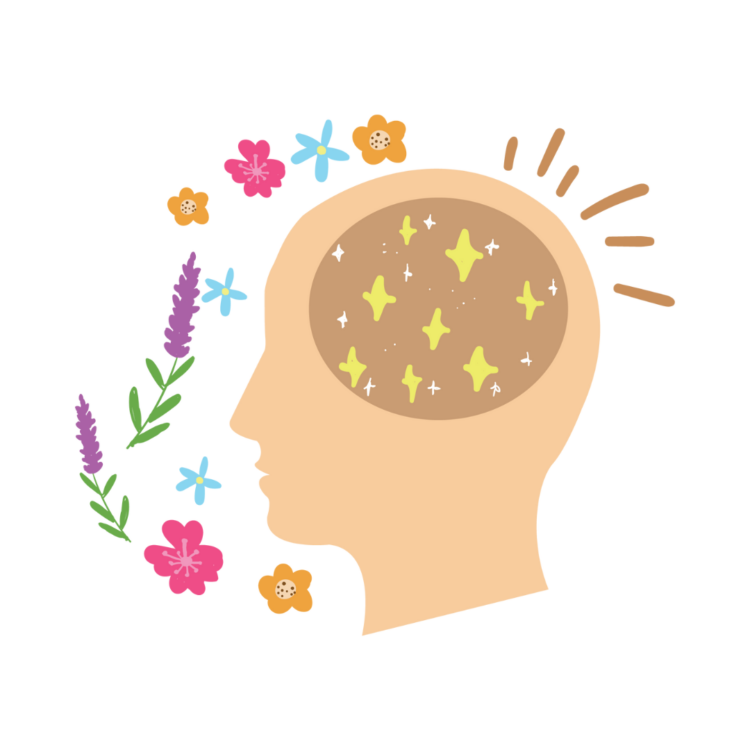Imagine the early morning feeling of wakefulness. You regain consciousness; but rarely realize that this feeling is constantly flowing through your mind, most times during the day.
It’s easy to allow one’s mind to wander into the past with regret or aimlessly into the future with worry. Stepping into the present or the “void” is the ultimate goal to feel fully connected to oneself.
Consciousness is a contemporary, central theme in artistic exploration, philosophical inquiry, and scientific investigation. Throughout history, thinkers have grappled with defining and understanding this elusive phenomenon. From a scientific perspective, consciousness refers to being awake and perceptive and is commonly considered a byproduct of brain activity: a result of neurons conducting and chemicals reacting. However, this scientific lens faces significant limitations when explaining the profoundness of the influence of consciousness on an individual’s thoughts, emotions, and physical well-being.
“Consciousness is a contemporary, central theme in artistic exploration, philosophical inquiry, and scientific investigation.”
Research published in Neural Plasticity describes mindfulness as a form of meditation with profound effects on the brain. Mindfulness is the practice of intentionally grounding oneself in the present moment, observing thoughts and feelings without judgment. The researchers demonstrate that 8 weeks of consistent mindfulness-meditation led to an increase in gray matter density in the brain’s right anterior insula (a region responsible for self-awareness, and emotional regulation). These changes suggest that mindfulness meditation can significantly promote neuroplasticity (the brain’s ability to restructure in response to external stimuli) and as a result, enhance mental health.
Generally, consciousness is regarded as unmeasured, unobserved, and ultimately: untested. Since science’s constraints are naturally limited due to the preciousness of consciousness, fully understanding this phenomenon must be done through a more complex, interdisciplinary lens.
Like a blank space representing the unknowns of self and life, the ‘void’ is endlessly explored by artists, scientists, and philosophers alike. Questioning the realm of the unknown often challenges known beliefs, and for most, these questions arise in popular media like films and novels. Respectively, topics of consciousness and spirituality are frequently explored through novel metaphors that resonate with viewers’ lived experiences.
“Like a blank space representing the unknowns of self and life, the ‘void’ is endlessly explored by artists, scientists, and philosophers alike.”
The film “Interstellar” (2014) uses metaphor to represent the Void as an mystical expanse where human understanding reaches its limits, lending to new forms of existence. Similarly, “Inception” (2010) delves into the nature of dreams: teasing apart the layers of consciousness as a means of questioning what lies beyond the surface-level of perception.
Some philosophers believe that consciousness is a result of physical processes, like brain activity; this model is known as physicalism. Others hold a model based in dualism, an idea that consciousness arises from non-physicals like the soul or the mind.
Adapting a spiritual perspective, this unknown sense of void is typically correlated with a higher-state-of-being, and sometimes: life and death. Spirituality, to most, is often intertwined with the human’s innate quest to find meaning. It can act as a lens through which one can attempt to make sense of one’s existence and, by extension, consciousness. Ultimately, all encounter the common sense of mystery — a “void” in our understanding.
Embracing the present moment in its absolute state is a powerful tool for personal growth and transformation. This powerful practice of mindfulness allows us to live more comfortably in the present without judgment. Some ways to practice mindfulness are to be still and tune into the different sensations in your body, embracing the mind-body connection.
Another way is to practice mindfulness meditation, which is observing all passing thoughts and feelings without judgment. Practicing mindfulness meditation is shown to increase emotional regulation and help retrain the mind from spontaneous wandering. In this practice, the uncertain becomes a space that practitioners are encouraged to embrace, then let go of.
Overall, mindfulness represents a form of mental self-care to bring thoughts and feelings into the present and just exist, essentially going into one’s “void” of understanding. Here, in the stillness of consciousness, nothing and everything can co-exist, inviting us to continually explore the infinite within ourselves.
- Frontiers in Human Neuroscience (2021). DOI: 10.3389/fnhum.2021.786133
- Perspectives on Psychological Science (2021). DOI: 10.1177/1745691620917340
- Neural Plasticity (2020). DOI: 10.1155/2020/8830005
- Cold Spring Harbor Perspectives in Biology (2010). DOI: 10.1101/cshperspect.a001917
- Yale French Studies (1995). DOI: 10.2307/2930104
